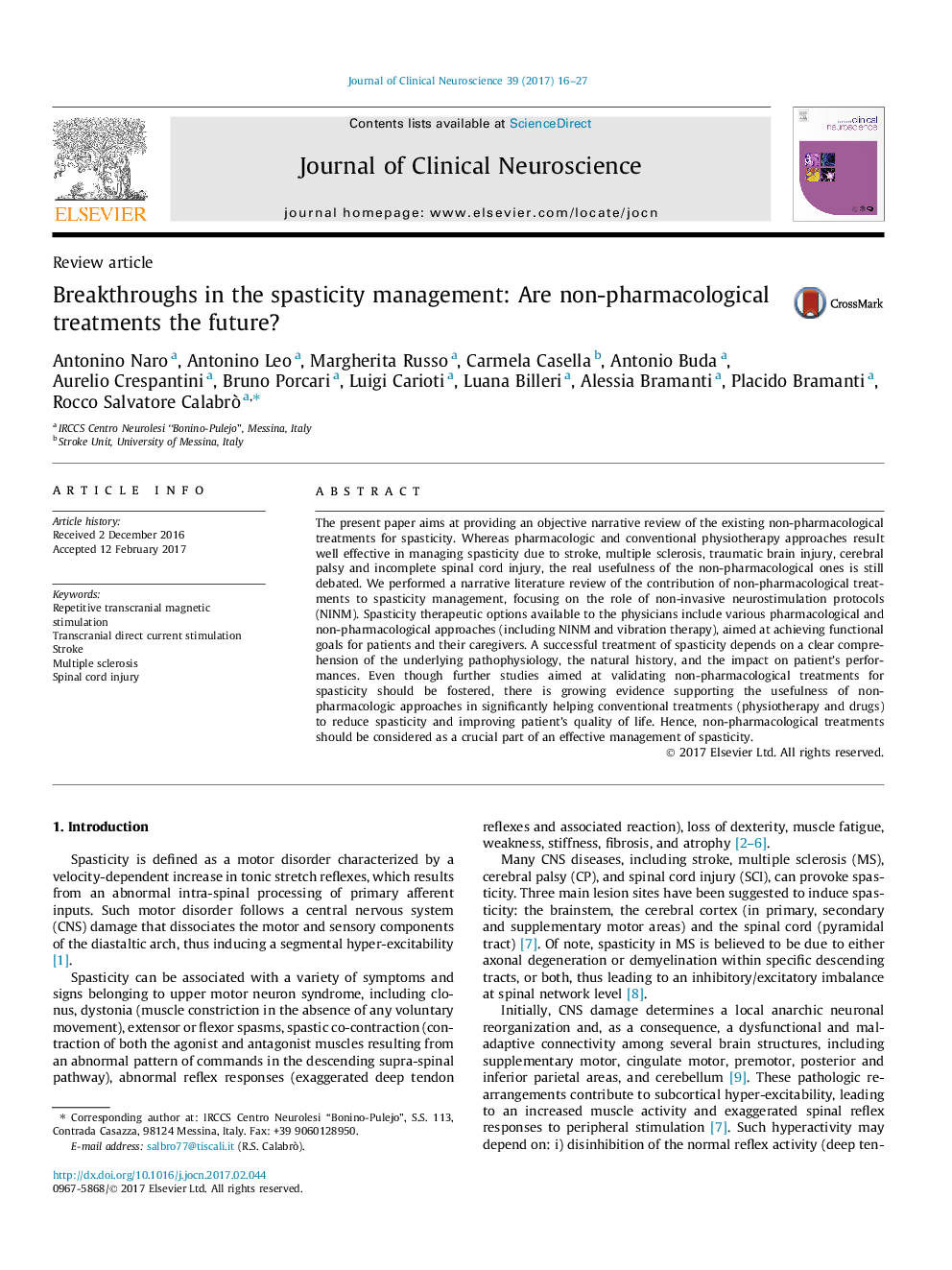| کد مقاله | کد نشریه | سال انتشار | مقاله انگلیسی | نسخه تمام متن |
|---|---|---|---|---|
| 5629921 | 1580277 | 2017 | 12 صفحه PDF | دانلود رایگان |
- Spasticity can cause a severe disability and challenge the rehabilitation process.
- A successful treatment of spasticity depends on a pathophysiologic assessment.
- The main therapeutic options include physiotherapy and pharmacological treatments.
- Non-pharmacologic approaches may reduce spasticity and improve quality of life.
The present paper aims at providing an objective narrative review of the existing non-pharmacological treatments for spasticity. Whereas pharmacologic and conventional physiotherapy approaches result well effective in managing spasticity due to stroke, multiple sclerosis, traumatic brain injury, cerebral palsy and incomplete spinal cord injury, the real usefulness of the non-pharmacological ones is still debated. We performed a narrative literature review of the contribution of non-pharmacological treatments to spasticity management, focusing on the role of non-invasive neurostimulation protocols (NINM). Spasticity therapeutic options available to the physicians include various pharmacological and non-pharmacological approaches (including NINM and vibration therapy), aimed at achieving functional goals for patients and their caregivers. A successful treatment of spasticity depends on a clear comprehension of the underlying pathophysiology, the natural history, and the impact on patient's performances. Even though further studies aimed at validating non-pharmacological treatments for spasticity should be fostered, there is growing evidence supporting the usefulness of non-pharmacologic approaches in significantly helping conventional treatments (physiotherapy and drugs) to reduce spasticity and improving patient's quality of life. Hence, non-pharmacological treatments should be considered as a crucial part of an effective management of spasticity.
Journal: Journal of Clinical Neuroscience - Volume 39, May 2017, Pages 16-27
